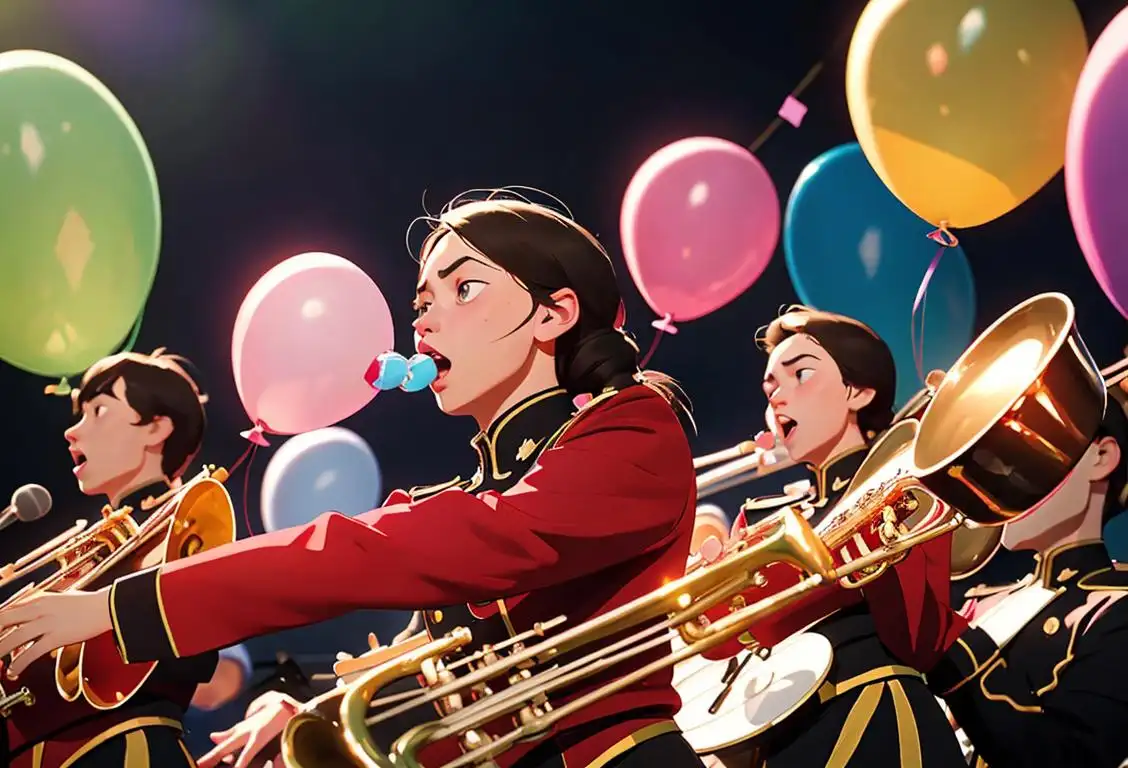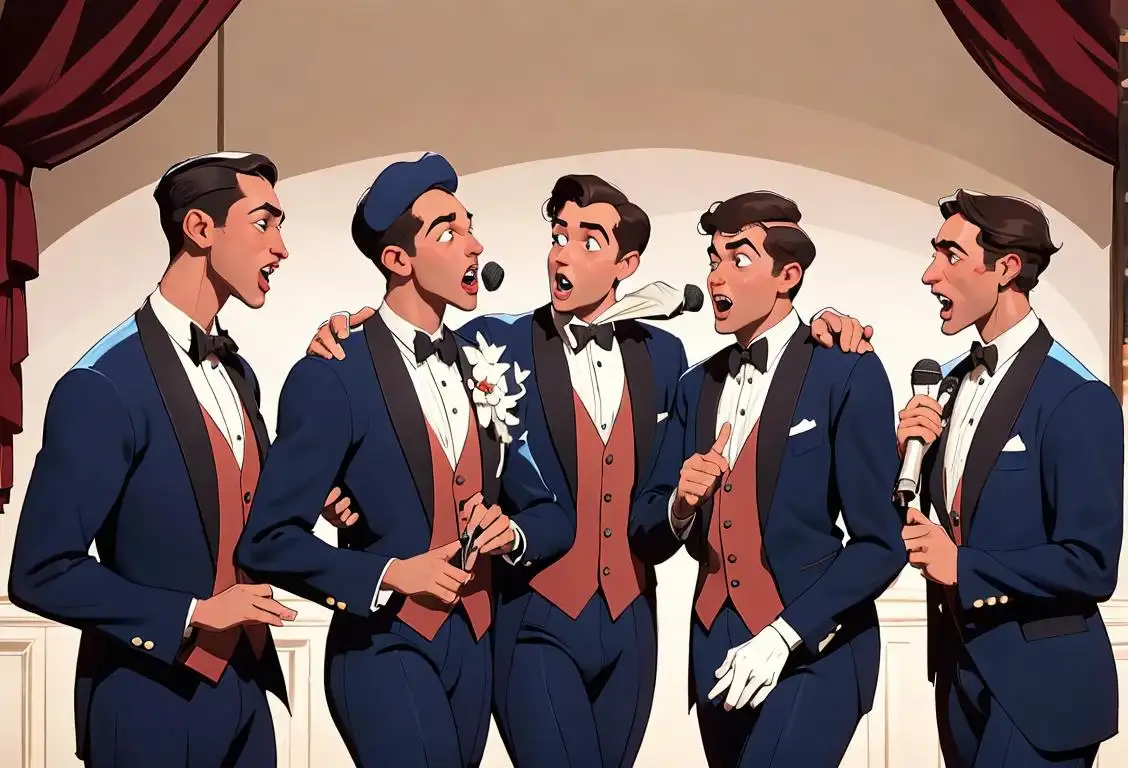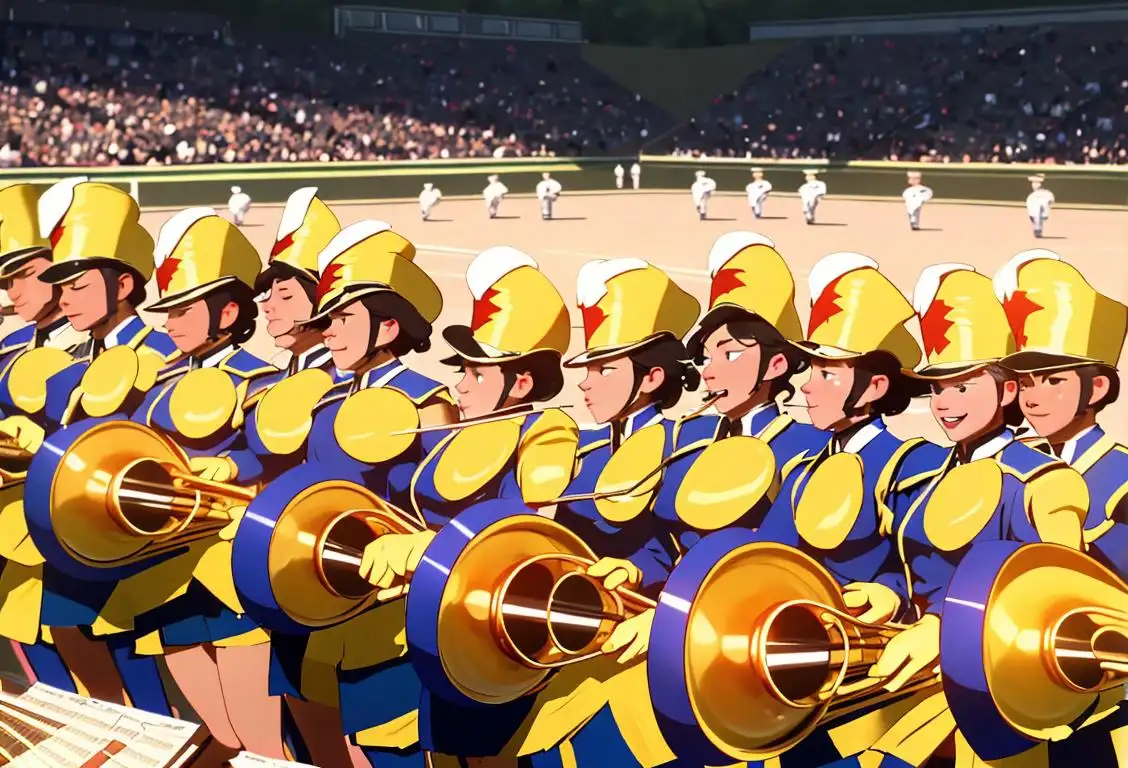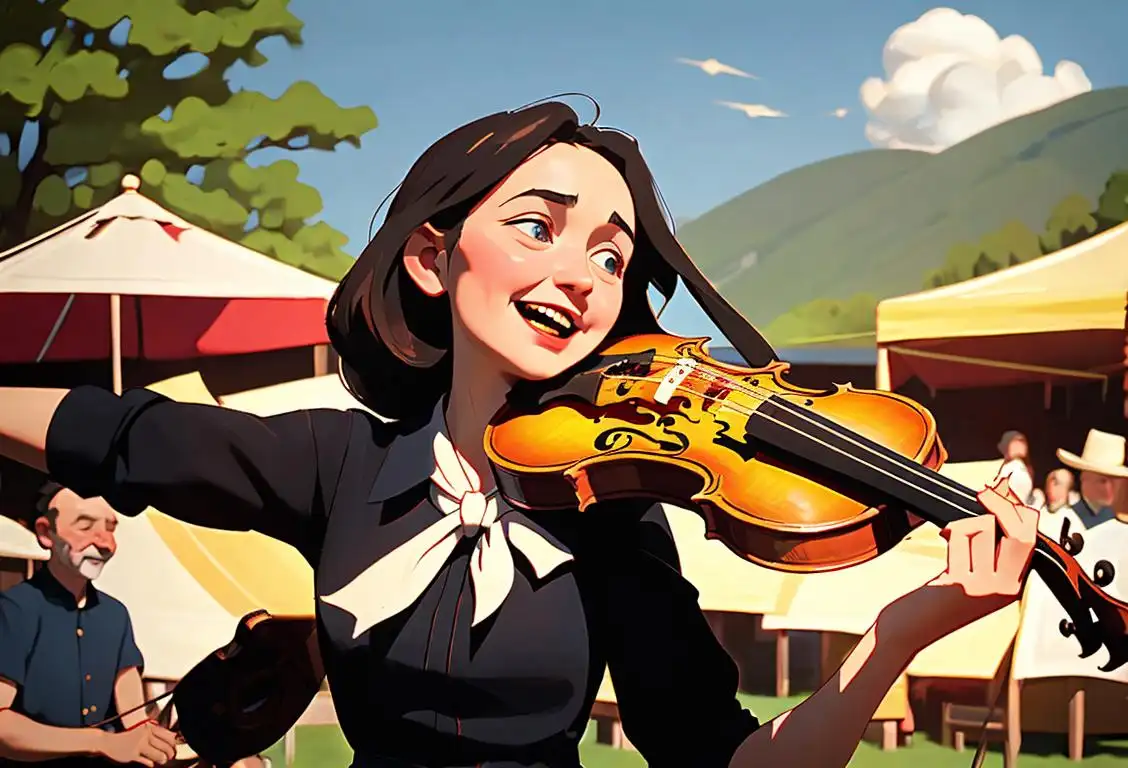National Drummers Day
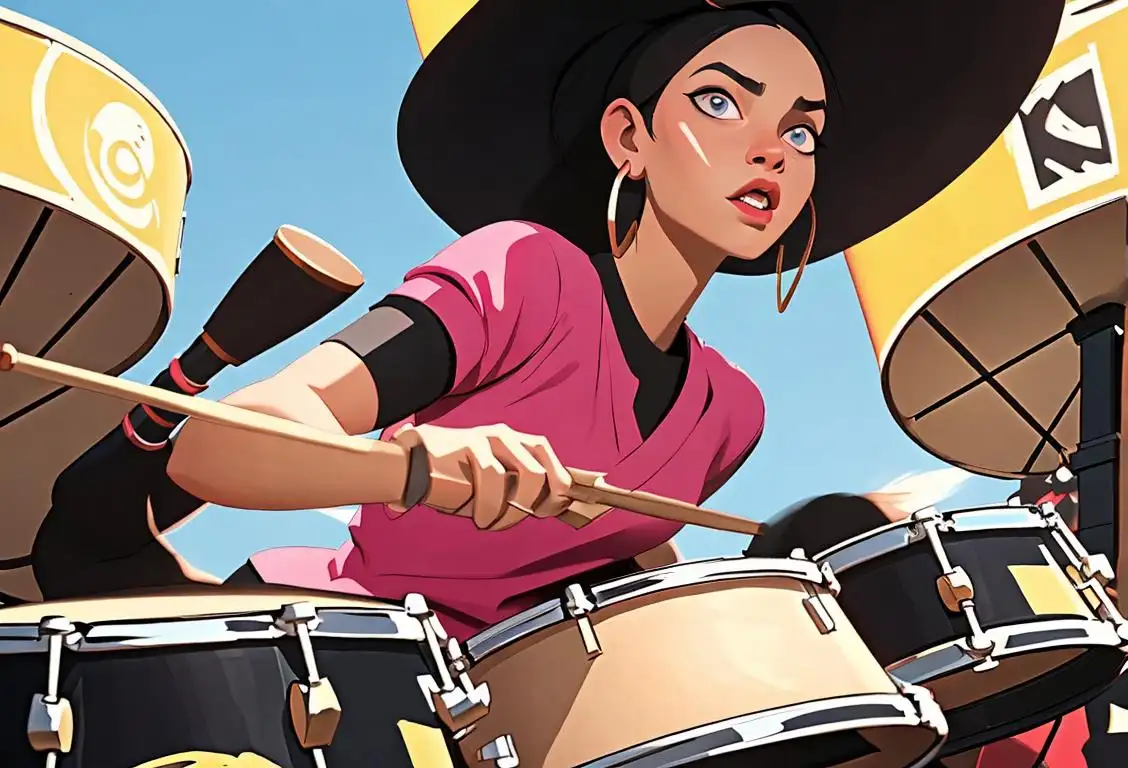
Hey there, drumming enthusiasts! Get ready to march to the beat of your own drum because National Drummers Day is here! Whether you're a professional drummer, an air drummer extraordinaire, or just an avid appreciator of rhythm, this day is for you. So grab your drumsticks and let's dive into the wild and wonderful world of drumming!
When is Drummers Day?
It's national drummers day on the 16th November.
The Rhythmic Roots of National Drummers Day
On this special day, we celebrate the power and passion of drummers and their incredible contribution to music. Drumming has been an integral part of human culture for thousands of years, transcending time and connecting people across continents. From ancient tribal rituals to modern rock concerts, the beat of the drum has an undeniable ability to move our bodies and arouse our spirits.
The origins of National Drummers Day are shrouded in mystery, much like the thunderous beats of a bass drum. While we couldn't track down the exact moment this celebratory day came into existence, we know for sure that it has gained a cult-like following among music aficionados and drumming enthusiasts alike.
The Rhythm Masters Who Paved the Way
Drummers are the backbone of any band, setting the tempo and driving the music forward with their skillful techniques. Throughout history, countless drummers have left their indelible mark on the world of music.
One of the most influential drummers of all time is the legendary Buddy Rich. Known for his lightning-fast hands and innovative playing style, Buddy Rich was a true virtuoso who effortlessly blended jazz, swing, and big band music. His drum solos were mind-bogglingly complex, leaving audiences in awe and aspiring drummers in a state of equal parts admiration and despair.
Another iconic drummer who rocked the music scene is Ringo Starr of The Beatles. With his unique sense of groove and unconventional fills, Ringo brought a distinctive flavor to the band's timeless songs. Songs like 'Come Together' and 'Ticket to Ride' owe much of their infectious energy to Ringo's rhythmic prowess.
A Drum Roll, Please!
Now, we can't celebrate National Drummers Day without a nod to the different types of drums out there. There's the booming bass drum that sets the foundation for the entire ensemble, the snappy snare drum that adds that unmistakable crack to the rhythm, the tantalizing toms that provide depth and flavor, and the crashing cymbals that electrify the air and make hearts soar with each strike.
And let's not forget those mesmerizing drum solos that send shivers down our spines and make our hearts skip a beat. Whether it's Keith Moon's explosive performance in 'Won't Get Fooled Again' or John Bonham's thunderous groove in 'Rock and Roll,' drum solos have become the stuff of legends, leaving us in awe of the sheer talent and showmanship of these percussion wizards.
Keep the Beat Going!
So, on this National Drummers Day, let's honor the drummers who have rocked our world and continue to do so. Whether you're tapping your foot to the rhythm of a song or showcasing your own drumming skills, take a moment to appreciate the central role that drummers play in the world of music. And remember, the world is your drum kit!
History behind the term 'Drummers'
Ancient Times
The Rhythmic Beat
Drumming can be traced back to ancient civilizations, where early human beings would use various percussive instruments to create rhythmic sounds. These instruments often resembled drums and were made from materials such as animal skins, wood, and clay. The rhythmic beat of the drums played an essential role in religious ceremonies, cultural events, and communication among tribes and communities.
Ancient times
Origin of Percussion
In ancient civilizations, people first discovered the rhythmic sounds produced by tapping on various objects. These early forms of percussion were used primarily for communication, religious rituals, and even in battle. Drums, in particular, played a significant role due to their ability to produce loud and distinct sounds.
Ancient Times
The Birth of Rhythm
The origins of drumming can be traced back to ancient times. The earliest evidence of drumming comes from archaeological finds that date back thousands of years. In various ancient civilizations such as Mesopotamia, Egypt, and China, drums were used for ceremonial purposes, communication, and entertainment. These drums were typically made from animal skins stretched over wooden or metal frames, creating a resonant sound when struck.
16th Century
Military Percussion
During the 16th century, drums found their place in military contexts. They were used as a means of communication during battles, helping to relay commands and coordinate troops. Drummers were given specific patterns and beats to signal various actions, such as advancing, retreating, or changing formations. The skill and precision of drummers became crucial in maintaining order and discipline on the battlefield.
Middle Ages (5th - 15th Centuries)
Military Drumming Takes Center Stage
During the Middle Ages, drumming took on a new importance as it became an integral part of military activities. Drummers played a crucial role in conveying signals and commands on the battlefield, as well as boosting morale and maintaining the rhythm of marching troops. Military drums, known as snare drums, evolved to have a tighter, more piercing sound that could cut through the noise of battle. This period marked the first significant association of drumming with military and martial activities, setting the stage for its future significance.
9th century
European Medieval Period
During the medieval period, drummers started to gain prominence in Europe. They became an essential part of military bands and were responsible for coordinating troops, signaling commands during battles, and boosting morale. The rhythmic beats of drums provided a sense of unity and discipline among soldiers.
18th and 19th Centuries
The Rise of Percussion Bands
In the 18th and 19th centuries, percussion bands gained popularity, particularly in Europe and the United States. These bands featured a variety of percussion instruments, including drums, cymbals, triangles, and xylophones. They performed in parades, concerts, and social gatherings, adding a vibrant and rhythmic element to public events. Drummers became well-known figures, showcasing their skills through intricate rhythms and flashy drumming techniques.
18th century
Emergence of Military and Brass Bands
In the 18th century, military bands and brass bands became increasingly popular. Drums played a crucial role in these ensembles, not only providing rhythmic support but also adding a powerful and dynamic component to the overall sound. Drummers were highly skilled musicians, often required to perform complex drumming patterns and rolls.
18th Century
Influence of African and Indigenous Cultures
As European colonization spread across the globe in the 18th century, cultural exchange occurred between colonizers, African slaves, and indigenous peoples. The rich rhythmic traditions of African and indigenous cultures heavily influenced the development of drumming styles. These styles merged with European military drumming techniques, creating a diverse range of percussive music and inspiring new forms of expression.
19th century
Development of Drum Kit
During the 19th century, the drum kit, as we know it today, started to take shape. Multi-piece drum setups with bass drums, snare drums, cymbals, and other percussion instruments became more common. This innovation allowed drummers to create a wider range of sounds and expand their expressive capabilities, leading to further recognition of their role as musicians.
20th Century
The Influence of Jazz and Rock 'n' Roll
The 20th century brought a revolution in music, with genres like jazz and rock 'n' roll taking the world by storm. Drummers played a pivotal role in shaping these new musical styles. Early jazz drummers, such as Baby Dodds and Gene Krupa, introduced improvisation and syncopated rhythms, adding complexity and energy to the music. In the 1950s and 1960s, rock 'n' roll drummers like Keith Moon and Ringo Starr pushed the boundaries of drumming further, incorporating innovative techniques and creating a distinctive sound that defined the era.
19th Century
Drumming in Theatre and Entertainment
In the 19th century, drummers expanded their role beyond military contexts. Drumming became popular in theatre productions, adding energy and excitement to performances. This inclusion of drums in theatrical acts led to the emergence of drumlines, where groups of drummers performed synchronized routines that captivated audiences. Drumming also became a prominent feature in circuses and parades, symbolizing celebration and grandeur.
20th century
Drummers in Popular Music
With the advent of popular music genres like jazz, rock, and funk, drummers gained immense recognition and influence. Drum solos became an integral part of live performances, showcasing the technical prowess and creativity of drummers. Legendary drummers like Gene Krupa, Buddy Rich, and John Bonham popularized the art of drumming, inspiring countless aspiring musicians.
Modern Era
Versatility and Innovation
In the modern era, drumming has become incredibly diverse, reflecting a wide range of musical genres and styles. Drummers continue to break boundaries and innovate, exploring new techniques, incorporating electronic components, and experimenting with different rhythms and sounds. They are integral members of bands across various genres, from pop and hip-hop to metal and world music. Drumming has also become a popular form of recreation and self-expression, with individuals taking up drumming as a hobby or joining drum circles to create communal rhythmic experiences.
20th Century
From Jazz to Rock
The 20th century witnessed significant transformations in drumming styles and techniques. With the rise of jazz, drummers like Buddy Rich and Gene Krupa brought solos and improvisation to the forefront, revolutionizing the role of drummers in bands. As music continued to evolve, drummers started experimenting with new sounds and techniques, paving the way for the birth of rock drumming. Legendary drummers like John Bonham and Keith Moon pushed the boundaries of drumming, showcasing its power and versatility within rock music.
Present Day
Drummers as Technological Pioneers
In the present day, drummers continue to innovate and explore new possibilities in music. With advancements in technology, electronic drums and percussion instruments have become increasingly popular, offering drummers a wide range of sounds and effects. Drummers also play an essential role in recording studios, where their technical skills contribute to the creation of polished and captivating music. Additionally, modern drumming communities have emerged online, allowing drummers from all over the world to connect, collaborate, and learn from each other.
21st century
Drummers in the Digital Age
In the digital age, drummers have adapted to new technologies. Electronic drums, sampled sounds, and drum machines have become prevalent, expanding the sonic possibilities for drummers. The rise of online platforms and social media has allowed drummers to connect, share their performances, and collaborate across the globe, further enhancing the drumming community and its cultural impact.
Did you know?
Did you know that the world record for the most drummers playing simultaneously was set in Germany in 2012? A staggering 1,606 drummers gathered together to create a thunderous symphony of beats, scoring a drumming victory for the ages!Tagged
celebration music entertainment drummingFirst identified
10th October 2015Most mentioned on
16th November 2020Total mentions
210Other days
Drummers Day
Band Day
Barbershop Quartet Day
Marching Band Day
Fiddle Day
Get Out Your Guitar Day
Krept And Konan Day
Travis Scott Day
Showtime Day
Trance Day
